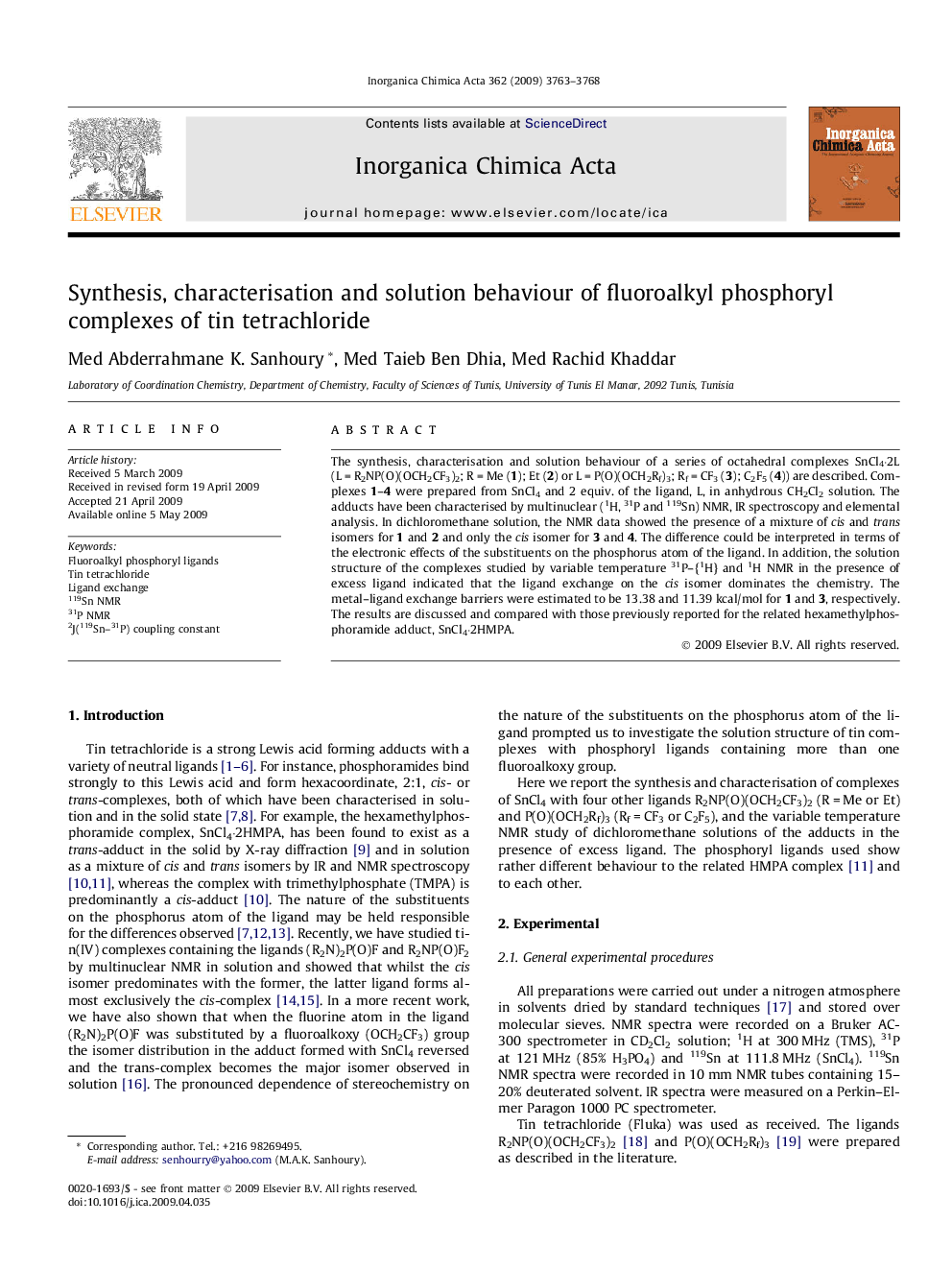| Article ID | Journal | Published Year | Pages | File Type |
|---|---|---|---|---|
| 1309726 | Inorganica Chimica Acta | 2009 | 6 Pages |
The synthesis, characterisation and solution behaviour of a series of octahedral complexes SnCl4·2L (L = R2NP(O)(OCH2CF3)2; R = Me (1); Et (2) or L = P(O)(OCH2Rf)3; Rf = CF3 (3); C2F5 (4)) are described. Complexes 1–4 were prepared from SnCl4 and 2 equiv. of the ligand, L, in anhydrous CH2Cl2 solution. The adducts have been characterised by multinuclear (1H, 31P and 119Sn) NMR, IR spectroscopy and elemental analysis. In dichloromethane solution, the NMR data showed the presence of a mixture of cis and trans isomers for 1 and 2 and only the cis isomer for 3 and 4. The difference could be interpreted in terms of the electronic effects of the substituents on the phosphorus atom of the ligand. In addition, the solution structure of the complexes studied by variable temperature 31P–{1H} and 1H NMR in the presence of excess ligand indicated that the ligand exchange on the cis isomer dominates the chemistry. The metal–ligand exchange barriers were estimated to be 13.38 and 11.39 kcal/mol for 1 and 3, respectively. The results are discussed and compared with those previously reported for the related hexamethylphosphoramide adduct, SnCl4·2HMPA.
Graphical abstractThe octahedral complexes SnCl4·2L (L = R2NP(O)(OCH2CF3)2 or L = P(O)(OCH2Rf)3) have been synthesised and characterised by multinuclear (1H, 31P and 119Sn) NMR, IR spectroscopy and elemental analysis. In dichloromethane solution, the NMR data showed the presence of a mixture of cis and trans isomers for L = R2NP(O)(OCH2CF3)2 and only the cis isomer for L = P(O)(OCH2Rf)3. In addition, the solution structure of the complexes studied by variable temperature (31P and 1H) NMR in the presence of excess ligand indicated that the ligand exchange on the cis isomer dominates the chemistry.Figure optionsDownload full-size imageDownload as PowerPoint slide
